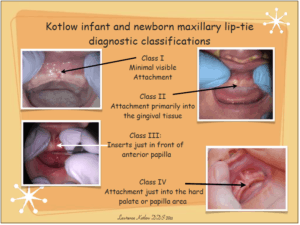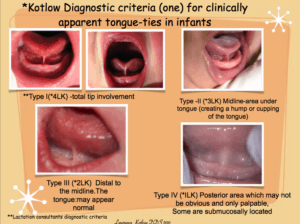Q & A with the Boise Baby Nurse #1
*Disclamer* Baby nurse is a term commonly used for someone that cares for infants. I am not a licensed registered nurse in Idaho (RN) and am not claiming to be one.
When you work exclusively with newborns, as I do, there are a lot of scenarios you come across. Some frequently and some a little more rare. Today I wanted to share with all of you new parents some commonly asked questions.
Q: I was told my baby has “colic”. What can I do?

A: First of all I want to say that it is my personal opinion that the word “colic” is way overused and “colic” in general is over diagnosed by some newborn professionals. It is also my opinion that in most cases, colic can be resolved by doing a few things:
- Putting the baby on an age appropriate schedule. For help with this, you should consult with a Newborn Care Specialist or Infant Sleep Consultant. Contacting someone in you area may be helpful, but many providers now offer consultations via SKYPE or FaceTime. An age appropriate schedule will help the baby get restful REM sleep and full feeds.
- Rule out reflux. Reflux or the more serious Gastroesophageal Reflux Disease (GERD) will make most adults and infants uncomfortable. Often times making dietary changes for the infant will help. The removal of dairy, whether in the breastfeeding mother’s diet or by changing the infant’s formula will often help. Improvement is usually seen because dairy in general is very hard to digest, both for adults and babies. It’s the proteins casein and whey, not lactose. A lactose intolerance in an infant is actually quite rare.
- Be careful not to overstimulate your baby. Many new parents don’t think too much about running errands, having a lot of guests over or keeping their infant up for long periods of time. The reality is that infants are very sensitive and become overstimulated very easily. At 12 weeks your baby should be up no longer that 1.5 hours at a time, which includes the time it takes to feed them. Bright lights, loud talking, tv’s, dishes banging, the baby being passed from person to person and a toddler screaming will all contribute to your baby becoming overtired. They have been used to a nice and secure, temperature controlled environment with continuous soothing through movement and all the “white noise” sounds of the woman’s body.
- If they are less than 4-5 months old and not rolling over, swaddle them or hold them close to your body. A baby’s nervous system gets easily agitated and swaddling or holding them close to you will help to organize them. If you allow them to flail their arms, they will continue to get worked up, becoming more and more agitated.
- Implement Dr. Harvy Karps 5’s. These are:
- Shhhhhing. Loudly, right next to their ear
- Swinging – to be used for soothing, not sleeping
- Side lying – placing the baby on their side. Again not for sleep.
- Sucking – pacifier. Not as a dependency only as a tool for short periods of time. I will be doing another post on my pacifier rules specifically.
- Swaddling – for the reasons listed above. This is actually the first step to calming a baby that is worked up.
For more info on colic, please read my previous post: Reflux, colic and a witching hour oh my!
Q: I have heard a lot about tongue and lip ties recently. What do I need to know about them?
A: I would suggest you do a little research and familiarize yourself with what they look like and typical symptoms both the mom and baby will present when the baby does have a tie. I will tell you that when there is a lip tie, chances are very likely that your baby will also have a tongue tie. Some estimates are as high as 90 percent. A lip tie is when there is restriction with the tissue that connects from the gum line to the upper lip. A tongue tie (ankyloglossia) is when there is restriction of the frenulum (tissue under the tongue).


Tongue and lip ties can cause so many issues, both immediate and long term. In my work with newborns and in educating and consulting with new parents, it is very important that I am able to evaluate the baby to make sure there aren’t any potential ties contributing to the issues I am being asked to help resolve.
When taking with the breastfeeding mother I will ask her:
- Do you have any pain while breastfeeding?
- Do you or have you had any blistering, cracking or bleeding from your nipples?
- Do you feel your baby is getting enough to eat?
- How often is your baby eating?
- How is your milk production? Has it changed?
- Does your baby make clicking noises while breast or bottle feeding?
- Does your baby choke, cough or gag while feeding?
When evaluating the infant i will look for:
- Does their weight appear to be normal?
- Can I visibly see a lip or tongue tie?
- Is there any blistering or blanching (discoloration) on the upper or lower lip?
- Is there notching in the upper gum line between where the two front teeth will emerge?
- Is there dimpling in the center of the tongue?
Lip and tongue ties can cause many issues for the infant, a lot of which have to do with improper tongue function. This is because the tongue is restricted by the tissue which prevents it from being able to properly lift, suction and cup. Feeding, speech development, palate development, proper breathing (belly breathing) TMJ issues, teeth development (gaps) are all affected by tongue function.


Ties are a complicated and controversial topic that I intend to cover in more depth in another post. While I am not a medical professional and cannot diagnose ties, if I suspect ties, I will refer the new parents to a preferred provider, usually immediately. It is so important that this professional be highly recommended in your community and someone that deals with and revises infant tongue and lip ties on a daily basis. Most states have a list of preferred providers that have been well vetted. Join Facebook groups within your state and start asking questions about the recommended providers. Pediatric dentists are usually the most experienced providers you can take your baby to. If you have a feeling your baby has a tongue or lip tie, please don’t turn down that gut feeling. It is unfortunate, but a lot of trusted infant care providers are not educated in this area enough or believe that revising ties aren’t beneficial. You will likely be told that your baby doesn’t have a tie or that their tie won’t affect them long term. Please reach out to someone that can help you get into a trusted professional. It may take more than one second opinion.
Q: Do you recommend feeding twins one at a time or together?
A: In most cases, I recommend the babies are kept on the same schedule. This means they eat, play and sleep at the same times. If one or both of the babies have medical needs or trouble eating, you may need to stagger them or have two people available to feed at each of the feedings. If you stagger the babies, you will likely feel like you never have a break and are always feeding, changing or putting a baby to sleep. It really is best, if possible, to keep them on the same schedule. It will help save your sanity.
Q: Okay, so how do you feed two babies at one time?
A: If the babies are healthy and good eaters, it really is a piece of cake. For a breastfeeding mother, she will tandem breastfeed, latching one baby to each breast and then switching breasts at the next feed. Most tandem breastfeeding mothers utilize a breastfeeding pillow such as the Breast Friend, or use several other pillows to provide support to the babies and the mother. For bottle feeding, it is helpful to have an over sized love seat or long couch where you can have at least one Boppy. Place one baby on your knees (elevated several inches off the floor) and the other baby in the Boppy next to you. You may also have a Boppy on either side of you and feed them both in their own Boppy. When you need to burp one baby, use your lap to support the baby and burp them, while the other baby remains in their Boppy, then switch.
Their is another feeding pillow called the Twin Z which can be used to place both babies next to each other. You can kneel on the floor and bottle feed them this way as well.
Have questions you’d like answered? Please comment below or Contact Us directly.
Disclaimer:
The content contained in this blog is for informational and educational purposes only. It is not intended as medical advice or to replace the advice of any medical professional. It is based on our opinions and experience working with newborns and their families. Other’s opinions may vary. It does not represent the views of any affiliated organizations. The reader understands that term “Babynurse” is often a word used to describe a newborn caregiver. However, unless otherwise disclosed, we are not licensed nurses in any state. By reading and/or utilizing any information or suggestions contained in this blog, the reader acknowledges that we are not medical professionals and agrees to and waives any claim, known or unknown, past, present or future.
© 2018 Bishop Enterprises, LLC All Rights Reserved
